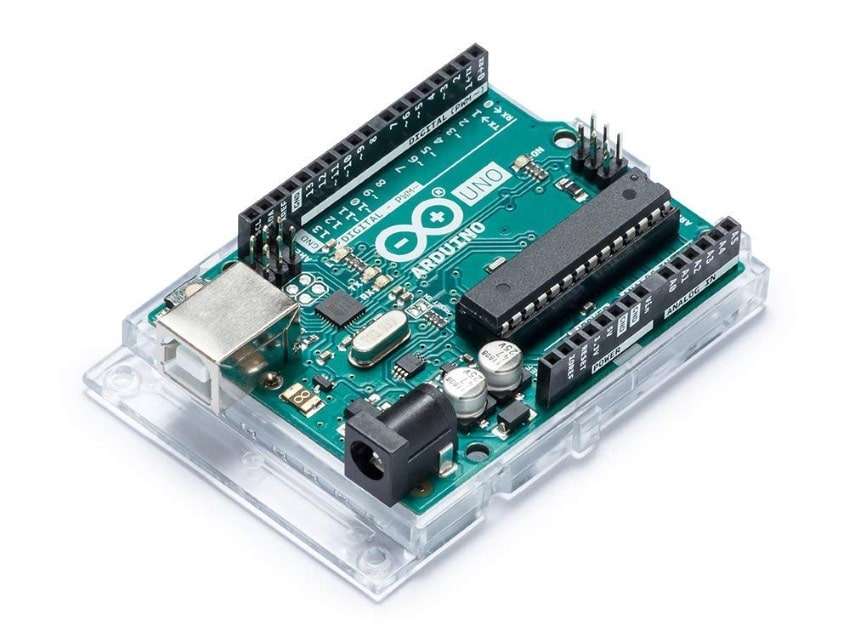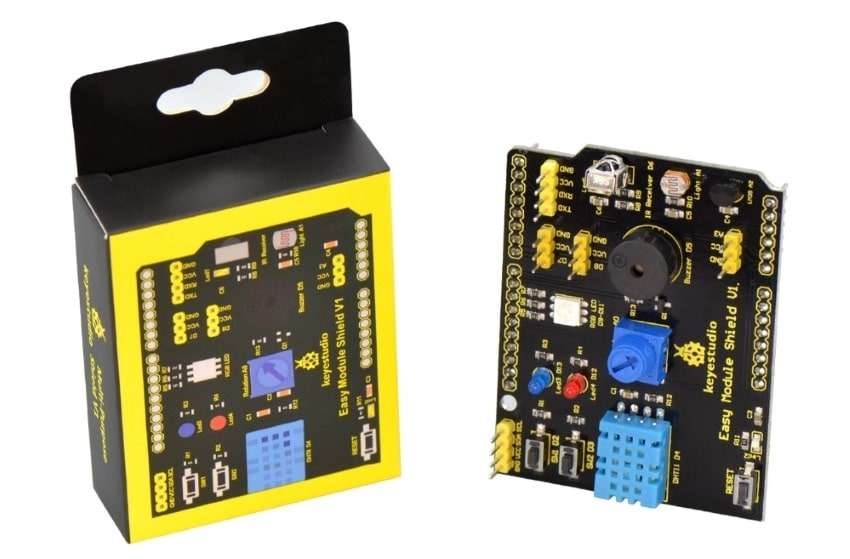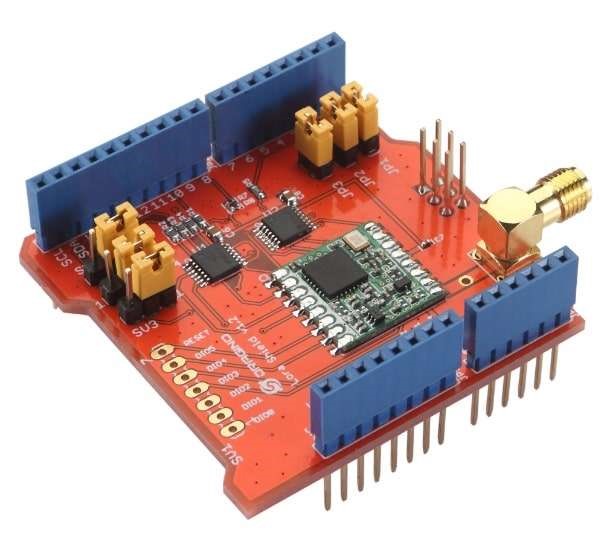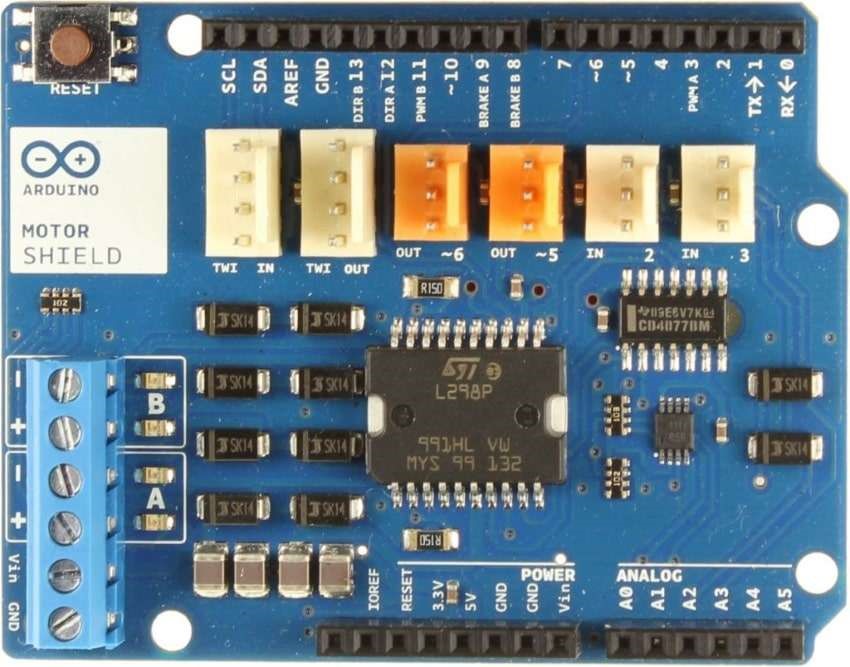By Cabe Atwell, contributing writer
The Arduino open-source development board is an immensely popular platform for engineers and makers to prototype their projects quickly. Its success and versatility is driven by its community, who has used it to drive home automation, power robotics, augmented reality, and a host of other projects.
While on its own, the Arduino is an excellent tool for any project, but pairing it with a shield expands its capabilities and raises the platform to a new level. In this roundup, we will take a look at some of the more useful shields that can turn an ordinary project into an excellent one.
 Image credit: Arduino
Image credit: Arduino
1. Keyestudio Easy Module Shield

Image credit: Keyestudio via AliExpress
Keyestudio’s Easy Module Shield is a learning platform for those just entering the world of Arduino and doesn’t require any soldering, making it easy to use as well. The add-on board features a DHT11 temperature and humidity sensor, LM35D temperature sensor, rotary potentiometer, and photoresistor. It also hosts an IR receiver, piezo buzzer, RGB/blue/red LEDs, two-channel digital port, single-channel analog port, IIC interface, TTL serial port, and a pair of pushbuttons. The Easy Module Shield is compatible with the Arduino Uno R3 only.

Image credit: Dragino
Dragino’s LoRa Shield is an excellent board that adds a long-range transceiver to the Arduino, with the trade-off being low data rates. The shield is based on Semtech’s SX1276/SX1278 chip and can achieve a sensitivity of over −148 dBm. Features include a programmable bit rate up to 300 kbps, a low RX current of 10.3 mA (200-nA register retention), fully integrated synthesizer (resolution of 61 Hz), and a built-in bit synchronizer for clock recovery. It also packs a built-in temperature sensor and low battery indicator, 127-dB Dynamic Range RSSI, and automatic RF Sense and CAD with ultra-fast AFC, among a host of other features.
3. Adafruit 1.8-inch color TFT shield with micro SD/joystick

Image credit: Adafruit
Some projects may require a display of some sort, and Adafruit’s 1.8-inch (128 × 160) Color TFT shield is an excellent choice and even includes a micro SD slot, three selection buttons, and a five-way joystick for navigation. The shield is “Arduino R3”-compatible, allowing it to be used with all Arduinos (Mega, Zero, etc.) and Metro microcontroller add-on boards. The shield also features a four-wire SPI digital interface, an onboard 3.3-V (@ 150 mA) LDO regulator, and an I2 C seesaw chip and is 5-V−compatible (use with 3.3-V or 5-V logic).
4. 1Sheeld+

Image credit: 1Sheeld via Adafruit
1Sheeld+ is a Bluetooth Low Energy (BLE) tethered shield for Arduino that turns Android and iOS smartphones into 40 different shields. This shield breaks down into two part: the shield itself and a mobile app. On the shield side, the board features an Atmel ATMega162 and a BLE module and communicates with an Arduino via UART. The board acts as the middleman, piping data between a smartphone and the Arduino board.
The app allows you to choose between 40 virtual shields that make use of the smartphone’s sensors rather than using physical boards. For example, you could control an RC vehicle utilizing the phone’s gyroscope or control lighting systems using voice commands.

Image credit: Arduino
Arduino’s Motor Shield allows the board to drive DC and stepper motors, relays and solenoids — essentially an essential piece of hardware if you plan to build a robot. The Motor Shield is built around the L298 dual full-bridge driver, which allows you to control two DC motors, including the speed and direction of each, independently. What’s more, the shield is TinkerKit-compatible, allowing you to connect a host of different modules, including a MOSFET receiver, additional relays, and more.
The article was originally published at EE Times. Please visit:
Advertisement
Learn more about Electronic Products Magazine





